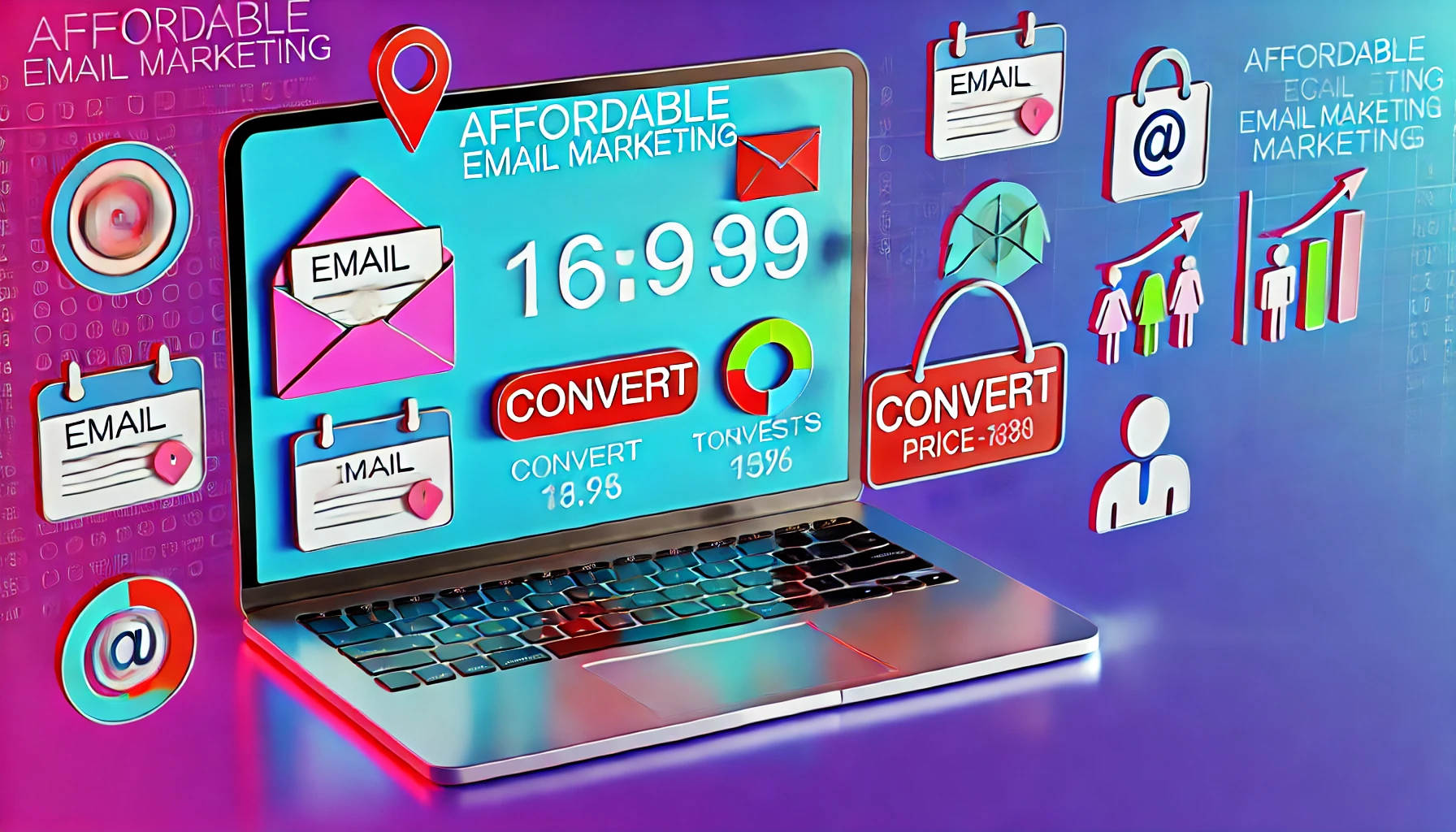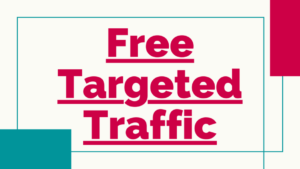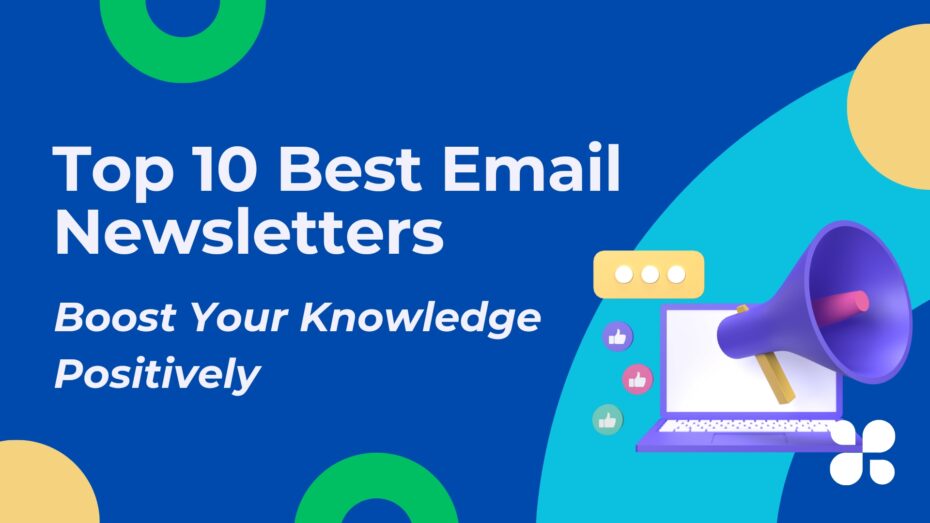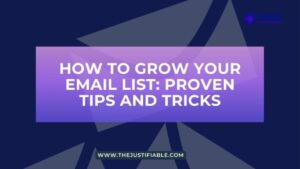Table of Contents
Are you searching for affordable targeted email marketing services that actually convert? Choosing the right service is key, whether you’re aiming to boost sales, engage subscribers, or nurture leads.
This guide explores essential features, leading providers, and practical strategies for maximizing conversions with budget-friendly email marketing tools.
Why Use Targeted Email Marketing Services?
Choosing targeted email marketing services is one of the best ways to ensure your messages reach the right audience. These services help you create campaigns that appeal directly to specific customer segments, enhancing engagement and boosting conversions.
Understanding Targeted Email Campaign Benefits
Targeted email campaigns are powerful tools for connecting with your audience in a personalized way. When you craft messages that align with recipients’ interests, you’re more likely to see higher open rates, increased clicks, and greater customer loyalty.
One major benefit is that you can segment your audience based on behavior, preferences, and buying habits. This targeted approach means that each recipient receives content that resonates, leading to a stronger bond between your brand and its audience.
Another advantage lies in efficiency: targeted campaigns reduce the time spent on generic messaging and increase engagement. By focusing on specific segments, you’re not only saving resources but also enhancing the quality of your customer interactions.
I recommend using targeted email services for building trust and loyalty. When your customers feel understood, they’re more likely to engage with your brand consistently, driving long-term success.
Affordable Solutions for Maximizing ROI
Affordable targeted email marketing services enable businesses to generate a strong ROI without a huge budget. These services offer essential features to attract and retain customers, helping you get the most out of every dollar spent on marketing.
Most affordable platforms provide segmentation, automation, and analytics. These core tools allow you to direct your messages to those most likely to act, reducing costs associated with broader, less-focused campaigns.
I suggest seeking email platforms with flexible pricing options that align with your business’s growth. Many services offer tiered plans, which means you can upgrade as your needs evolve while controlling your budget.
By focusing on affordable email marketing options, small businesses can build relationships with customers in a cost-effective manner. These tools enable you to compete with larger brands without overspending, maximizing your marketing potential.
Key Metrics for Tracking Success in Targeted Campaigns
Tracking metrics in your targeted email campaigns helps you understand what’s working and where to improve. Metrics like open rates, click-through rates, and conversion rates reveal the effectiveness of your messaging strategies.
Monitoring open rates gives insight into how well your subject lines resonate with your audience. Higher open rates often mean your subject lines are relevant and enticing to your targeted groups.
Click-through rates (CTR) show how many recipients engaged with links in your emails. If your CTR is high, it’s a strong indicator that your content aligns with your readers’ interests.
I advise regularly analyzing conversion rates as they measure the effectiveness of your campaign’s ultimate goal. Whether it’s signing up for a service or purchasing a product, a high conversion rate signals successful targeting and content alignment.
Features of Effective Targeted Email Marketing Services
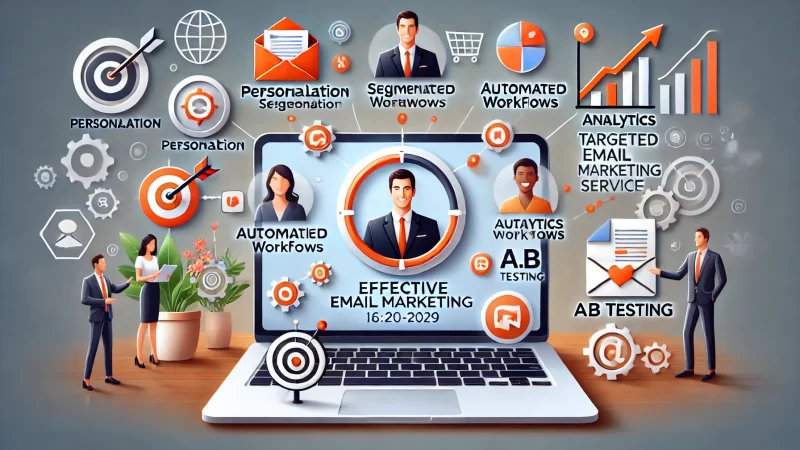
The best targeted email marketing services come equipped with a range of features designed to enhance engagement and boost conversions. From segmentation to automation, these features help you reach the right audience with the right message, at the right time.
Advanced Segmentation for Higher Conversions
Segmentation is essential in email marketing, as it allows you to divide your audience based on characteristics and behaviors. Effective segmentation helps you reach different customer groups with messages tailored to their specific needs and preferences.
With advanced segmentation, you can target users by demographics, interests, and purchase behavior. For instance, sending specific offers to repeat buyers can encourage loyalty, while welcoming new subscribers helps you make a strong first impression.
Using segmented lists means you avoid sending generic emails, which can lead to high unsubscribe rates. Instead, each message has relevance, which keeps your subscribers engaged and interested in what you have to offer.
I suggest testing various segmentation strategies to understand which ones resonate best with your audience. Over time, refined segmentation helps improve engagement rates, ultimately leading to more conversions and higher ROI.
Personalization Tools to Drive Engagement
Personalization goes beyond using the recipient’s name in an email—it involves crafting messages that align with each subscriber’s preferences and actions. Targeted email marketing services offer robust personalization tools to make your emails feel unique and relevant.
Personalization can include dynamic content that changes based on user behavior, such as recommending products they viewed on your site. This tactic helps you create a tailored experience that resonates more than a standard promotional email.
Another personalization feature is the ability to customize subject lines and CTAs based on segment interests. This helps drive higher open and click-through rates, as each subscriber receives content that feels personally relevant.
I believe personalization is critical for standing out in crowded inboxes. When users feel that your emails speak directly to them, they’re more likely to engage, increasing your chances of conversion and long-term loyalty.
Automation Features for Time and Cost Savings
Automation allows you to set up emails in advance and send them based on user actions or triggers, such as signing up for a newsletter or abandoning a cart. Automated workflows can save you time and keep your audience engaged without manual effort.
With automation, you can create welcome series, nurture campaigns, and re-engagement emails. These automated sequences ensure you stay top-of-mind with subscribers, guiding them through your sales funnel without requiring constant manual input.
Automating repetitive tasks also reduces operational costs, as your team can focus on other essential marketing efforts. This benefit makes automation a key feature for small businesses looking to optimize their email marketing.
I recommend exploring platforms that provide easy-to-use automation builders. Many services offer drag-and-drop builders for workflows, allowing you to design tailored campaigns effortlessly, ensuring your message reaches the right audience at the right time.
Analytics and Reporting for Data-Driven Campaigns
Analytics and reporting tools help you monitor your campaign’s performance and refine your approach. By analyzing data like open rates, click rates, and conversions, you can adjust your strategy to maximize results.
Effective analytics provide insights into which emails are performing well and which need improvement. This information helps you make data-driven decisions to enhance future campaigns and achieve your marketing goals.
Many platforms also offer visual reports and heat maps to show where users interact within your emails. These insights can be invaluable for fine-tuning your design and CTA placements to improve engagement rates.
I suggest using analytics as a continual feedback loop. Regularly reviewing your data helps you stay agile and responsive to your audience’s preferences, optimizing each campaign to meet your goals.
Top Affordable Targeted Email Marketing Platforms
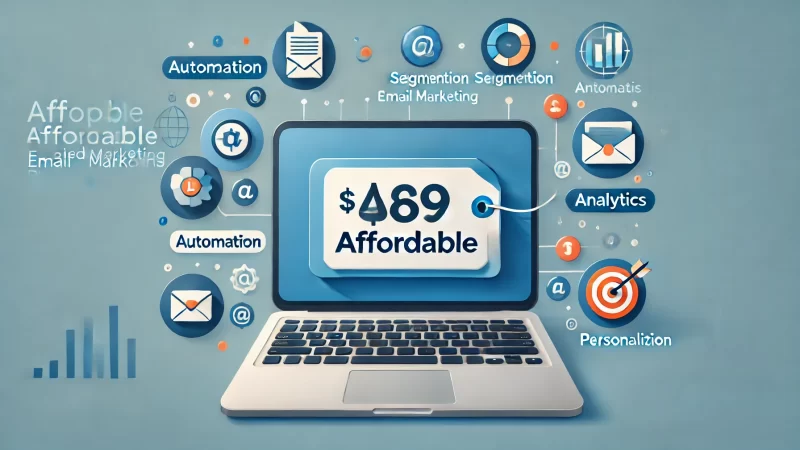
When selecting a targeted email marketing service, finding an affordable option without compromising on essential features is key. Here are some top choices that combine value with the powerful tools you need for successful campaigns.
Moosend – Feature-Rich Yet Budget-Friendly
Moosend offers a rich set of features at a competitive price, making it ideal for small businesses aiming for impactful email campaigns. It includes segmentation, personalization, and automation tools that keep your campaigns efficient and engaging.
Moosend’s segmentation allows you to target specific audiences effectively, boosting the relevance of each email sent. This helps you focus on subscribers who are most likely to engage, maximizing your outreach efforts and optimizing ROI.
With automation workflows, Moosend makes it easy to engage subscribers without manual effort. I recommend using its automation to create sequences that guide users through the sales funnel, helping drive conversions and maintain audience interest.
I believe Moosend’s affordable pricing and comprehensive features make it an excellent choice for budget-conscious marketers who need a flexible, all-in-one solution for their targeted email efforts.
Omnisend – Great for E-Commerce Conversions
Omnisend is designed with e-commerce businesses in mind, offering tools to create targeted campaigns that drive conversions. Its segmentation, automation, and integration with popular e-commerce platforms make it highly effective for online stores.
The platform’s segmentation options allow you to target customers based on their purchase behavior, leading to highly relevant messages that improve engagement and sales. This is ideal for targeting loyal customers with personalized recommendations.
Omnisend’s automation features include abandoned cart reminders and post-purchase follow-ups, which can significantly enhance the customer journey. I suggest leveraging these tools to recover lost sales and nurture repeat buyers.
Its seamless integration with e-commerce platforms means you can create campaigns directly tied to your store’s data, helping optimize marketing efforts. I advise online retailers to consider Omnisend for its focus on boosting e-commerce conversions.
MailPoet – WordPress Integration Made Easy
MailPoet is the go-to email marketing solution for WordPress users, offering seamless integration and budget-friendly options. This platform lets you manage everything from the WordPress dashboard, simplifying the setup process for site owners.
MailPoet’s drag-and-drop editor makes creating beautiful, branded emails simple. With its easy-to-use tools, you can quickly build campaigns that match your site’s look and feel, creating a consistent experience for your subscribers.
Its segmentation options enable you to target your audience based on site interactions, improving engagement. I recommend using this to send relevant content to different subscriber groups, enhancing the effectiveness of your campaigns.
For those managing smaller budgets, MailPoet provides essential features without the complexity or high costs, making it ideal for WordPress-based businesses seeking straightforward, integrated email marketing.
GetResponse – All-in-One Solution for All Budgets
GetResponse offers an all-in-one email marketing solution that caters to businesses of all sizes. From email marketing and automation to landing pages and webinars, it’s a versatile platform that supports diverse marketing needs.
Its segmentation and personalization options let you send targeted messages to specific audience segments. I advise using these tools to deliver relevant content, improving both engagement rates and customer satisfaction.
GetResponse’s automation workflows simplify repetitive tasks, enabling you to focus on strategy. The platform includes everything from welcome emails to cart abandonment, making it easy to engage and retain customers.
For those looking for a comprehensive yet affordable solution, GetResponse’s flexibility and wide range of features make it a strong contender in the targeted email marketing space.
WP Mail SMTP – Cost-Effective for Small Businesses
WP Mail SMTP is an effective choice for small businesses seeking a budget-friendly email marketing solution. Its focus on reliable email delivery ensures that your messages reach subscribers’ inboxes, improving engagement rates.
This platform includes SMTP features that improve deliverability, so you’re less likely to land in spam folders. I suggest using WP Mail SMTP to enhance email reliability, especially if your emails aren’t consistently reaching their recipients.
WP Mail SMTP’s setup is straightforward, making it accessible for businesses without dedicated technical resources. With easy installation, it’s ideal for smaller teams that need reliable email marketing without added complexity.
Its affordability and dependable features make WP Mail SMTP a valuable tool for small businesses aiming to establish a strong email marketing foundation while maintaining budget control.
How to Choose the Best Targeted Email Marketing Service
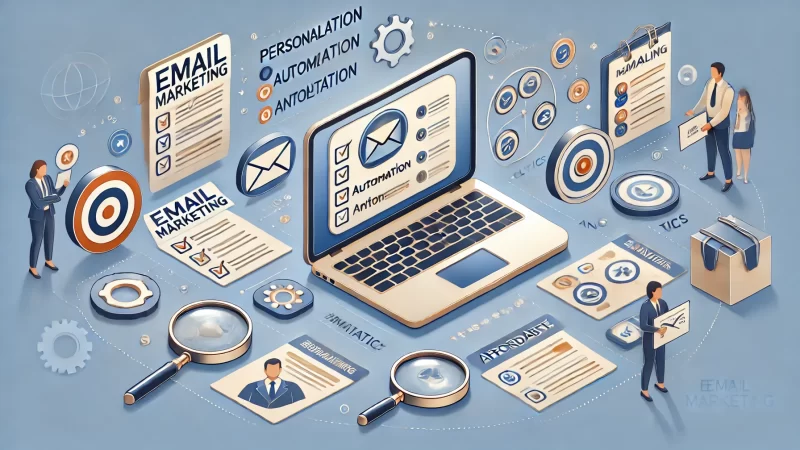
Selecting the right targeted email marketing service requires careful consideration of factors like features, cost, and user experience. Here are some key points to help you make an informed decision and optimize your email campaigns.
Evaluating Platform Features for Business Needs
When choosing a targeted email marketing platform, start by assessing which features align with your goals. Look for tools that provide segmentation, automation, and analytics to ensure you can effectively manage your campaigns.
Segmentation options are critical for targeting the right audience with relevant messages. I recommend prioritizing platforms that offer detailed segmentation to help tailor your content for different subscriber groups.
Automation features streamline campaign management by triggering actions based on user behavior, such as sending welcome emails to new subscribers. Platforms with strong automation capabilities allow you to engage customers without constant manual effort.
I believe comprehensive analytics is essential to track campaign performance and adjust strategies. Platforms with robust analytics tools let you measure engagement and conversions, giving you valuable insights to optimize results.
Assessing Pricing Plans for Cost-Effectiveness
Budget considerations are vital in selecting the right platform, especially for small businesses. Compare pricing plans to find one that meets your needs without overwhelming your budget, considering both current costs and scalability.
Some platforms offer free plans or trials, which can help you evaluate features before committing. I suggest exploring these options to ensure the platform’s tools align with your marketing goals without added expenses.
It’s wise to look at pricing tiers that support growth. As your subscriber list expands, you’ll want a plan that accommodates larger audiences without substantial cost increases, allowing you to scale efficiently.
I advise checking for hidden fees, such as those for premium features or additional contacts. Understanding the total cost ensures that you choose a platform that remains affordable as your business grows.
Customer Support and User Experience Considerations
Reliable customer support and ease of use are essential for any email marketing platform, especially for businesses new to these tools. Platforms that offer user-friendly interfaces and responsive support make campaign management easier.
User-friendly design helps you focus on crafting campaigns rather than troubleshooting issues. I recommend prioritizing platforms that streamline navigation and provide clear instructions, making it easy to manage emails effectively.
Look for platforms with various support channels, like live chat, phone, or email support. Having multiple contact options ensures you can get help when needed, making the experience smoother and more enjoyable.
I believe a supportive customer service team is invaluable, especially when tackling technical challenges. Platforms with knowledgeable support allow you to quickly resolve issues, helping you maintain smooth and successful campaigns.
Integrations and Compatibility with Other Tools
Your email marketing platform should integrate well with other tools you use, such as CRM systems, e-commerce platforms, or analytics software. Seamless integrations enhance functionality and streamline data flow between applications.
If you rely on CRM software, look for platforms that sync with your customer data, enabling personalized campaigns. I suggest prioritizing integration with your existing tools to simplify customer tracking and enhance targeting accuracy.
Platforms that work well with e-commerce systems allow you to access purchase data for more relevant messaging. For example, syncing with Shopify or BigCommerce helps you send timely product recommendations and exclusive offers.
I recommend considering compatibility with analytics tools for detailed insights. Integrations with software like Google Analytics enable deeper tracking of email engagement, helping you refine strategies based on audience behavior.
Creating Effective Targeted Email Campaigns on a Budget
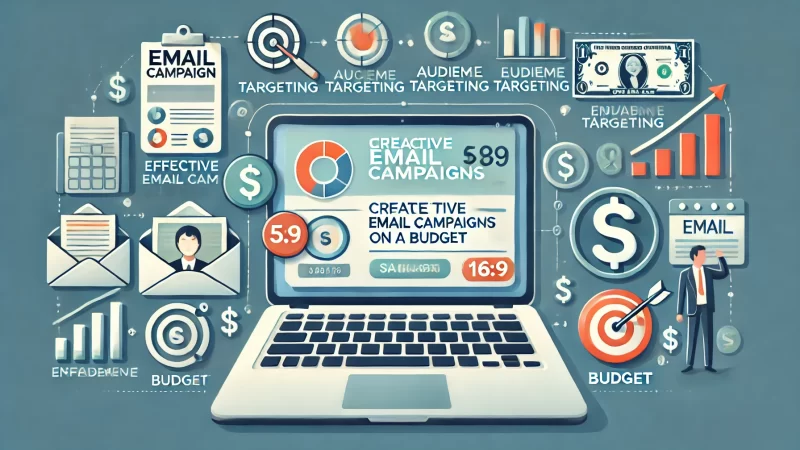
Budget-friendly targeted email campaigns can still deliver impressive results when crafted thoughtfully. Here’s how you can create impactful email campaigns that resonate with your audience while staying within budget.
Building Targeted Lists for Higher Conversion Rates
Building targeted lists is foundational for successful email campaigns. By focusing on specific audience segments, you increase the chances of sending relevant content that resonates, which naturally boosts engagement and conversion rates.
Segment your lists based on factors like interests, past purchases, and demographic data. I suggest targeting groups with shared traits to craft more meaningful messages that appeal directly to their preferences and needs.
You can also use website sign-ups, lead magnets, and social media to grow your list with interested subscribers. Adding these touchpoints helps you gather valuable leads who are more likely to engage.
I advise regularly cleaning your list to keep it relevant. Removing inactive subscribers ensures your campaigns reach the most engaged audience, maximizing the impact of each email you send.
Crafting Compelling and Engaging Subject Lines
Subject lines are the first impression of your email, making them crucial for grabbing attention. A well-crafted subject line entices readers to open the email, which is a critical step toward boosting conversions.
Aim to make subject lines short yet impactful. I recommend using action words or posing a question to spark curiosity, which can significantly improve open rates and encourage readers to dive in.
Adding personalization, like the recipient’s name, also helps capture attention. It makes the email feel tailored, showing subscribers that you understand them, which can drive higher engagement and clicks.
Remember to test different subject lines to see which approach resonates best with your audience. I suggest experimenting with various tones and phrases to find what maximizes your open rates.
Leveraging Visuals and CTA Buttons for Impact
Visuals and call-to-action (CTA) buttons can make emails more engaging and actionable. Images break up text and add interest, while CTA buttons make it clear where you want subscribers to go next.
Choose visuals that align with your brand and message. I recommend using images sparingly to avoid overwhelming the reader but ensure each image adds value to your content, enhancing the message.
CTA buttons should stand out, so readers know where to click. Use contrasting colors and straightforward language to guide subscribers toward actions, whether it’s reading a blog, making a purchase, or signing up.
Experiment with different CTAs and placements. I advise testing to find out where CTAs perform best in your emails, as small adjustments can make a big difference in click-through rates.
Testing and Optimizing Emails for Maximum Reach
Testing your emails before sending them helps ensure they’re optimized for engagement. Testing different elements, like subject lines, visuals, and CTAs, gives insight into what drives the best responses from your audience.
A/B testing is particularly effective. I recommend running tests on various email aspects to see what resonates most, helping you refine your approach for future campaigns.
Use analytics to understand email performance. Look at metrics like open rates, click-through rates, and conversions. This data helps you gauge success and informs improvements for future emails.
I advise making optimization a regular part of your strategy. Continual testing and adjustment ensure that each campaign is better than the last, improving results over time.
Common Mistakes to Avoid in Targeted Email Marketing
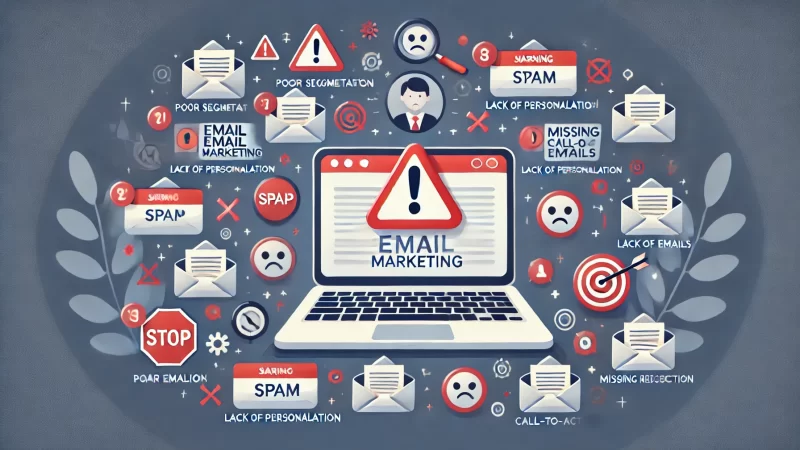
Even with targeted email marketing, certain pitfalls can hinder success. Here’s a look at common mistakes to avoid to make the most of your campaigns.
Overlooking Audience Segmentation Best Practices
Skipping segmentation in email marketing can lead to generic, less effective campaigns. Audience segmentation is key to delivering personalized content that resonates, improving engagement and conversion rates.
Segmenting based on behaviors and interests allows you to cater messages to different groups. I suggest starting with basic demographic data and then refining segments as you learn more about your audience.
Neglecting segmentation often results in high unsubscribe rates, as generic emails lack relevance. Personalized messages, on the other hand, show subscribers that you value their specific preferences and needs.
I believe focusing on segmentation can improve campaign outcomes significantly. A targeted approach ensures each email reaches the right audience, making each message more impactful.
Neglecting Personalization in Messaging
Personalization is a powerful tool in email marketing, yet it’s often overlooked. Emails that feel personalized are more likely to be opened, read, and acted upon, as they create a stronger connection with the reader.
Simple touches, like using the recipient’s name, can make emails feel personal. I suggest going beyond this by tailoring content based on user behavior or preferences, which can drive engagement even further.
Neglecting personalization may make emails seem generic, which could reduce reader interest. Adding personalized recommendations, like related products or content, can boost engagement and drive conversions.
I advise making personalization a priority in your campaigns. It’s a relatively simple way to stand out and foster a closer bond with your audience, enhancing the effectiveness of your messaging.
Ignoring Mobile Optimization for Email Layouts
Many users read emails on mobile devices, so optimizing emails for mobile is essential. Ignoring mobile optimization can lead to poor readability, affecting engagement and reducing conversion opportunities.
A mobile-friendly layout includes responsive design, easy-to-read text, and accessible CTA buttons. I suggest testing your emails on various devices to ensure they look great and are easy to navigate on mobile screens.
Large images or complex designs can disrupt mobile readability. Consider keeping visuals minimal and focusing on clean, straightforward layouts to maintain readability across all devices.
I recommend prioritizing mobile optimization as part of your design process. Ensuring a seamless experience on mobile devices helps you reach and engage more readers, improving your overall results.
Missing Out on Regular A/B Testing
A/B testing helps refine email campaigns, yet it’s often overlooked. Testing different aspects of emails, like subject lines and CTA placements, helps identify what resonates best with your audience, improving campaign effectiveness.
Testing provides data-driven insights, making it easier to adjust strategies based on real results. I suggest running A/B tests regularly to keep your campaigns aligned with audience preferences and maximize impact.
Skipping A/B testing can mean missed opportunities for improvement. Testing various approaches allows you to discover what drives engagement, which can boost performance over time.
I recommend making A/B testing a routine part of your strategy. Consistent testing and optimization ensure your campaigns stay relevant and effective, leading to better engagement and results.
Tips for Boosting Conversions with Targeted Email Services
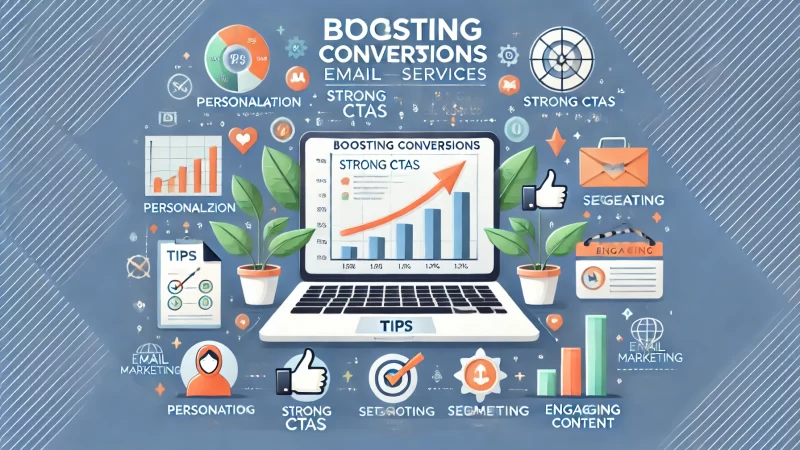
Boosting conversions with targeted email services requires smart strategies and personalization. By tailoring emails to audience behavior and interests, you can create more relevant and engaging messages that drive better results.
Implementing Behavioral Triggers for Relevance
Behavioral triggers activate email responses based on subscriber actions, like clicks or purchases. These triggers ensure your messages are timely and relevant, making recipients feel that the content genuinely speaks to their current interests.
Trigger emails keep your audience engaged, responding directly to their recent actions, such as abandoning a cart. I recommend using triggers for key moments like purchase reminders or browsing history to stay top-of-mind with your subscribers.
Setting up triggers based on past purchases or site activity personalizes each interaction. This approach enhances relevance, showing your audience that your content adapts to their needs and behaviors in real time.
I advise testing different behavioral triggers to see what resonates best with your audience. With thoughtful implementation, triggers can lead to stronger engagement and conversion rates over time.
Leveraging Dynamic Content for Personalized Experiences
Dynamic content personalizes emails by adapting elements, like images or text, based on recipient data. This customization creates emails that feel unique to each reader, enhancing relevance and engagement in every message.
Dynamic content can change based on subscriber preferences, such as displaying products related to past purchases. I recommend using dynamic blocks to create these custom experiences, helping your messages stand out in crowded inboxes.
Using dynamic content lets you target different segments within the same email. For example, you could promote different offers to various groups, maximizing relevance while minimizing effort.
I believe that dynamic content helps foster a deeper connection with subscribers. When emails reflect each recipient’s preferences, they’re more likely to engage, driving conversions and building brand loyalty.
Setting Up Drip Campaigns for Long-Term Engagement
Drip campaigns are automated sequences that nurture subscribers over time, guiding them from awareness to action. These campaigns keep your brand in front of your audience, making it easy to maintain ongoing engagement without overwhelming subscribers.
Drip campaigns are perfect for educating new subscribers about your brand. I suggest starting with a welcome series to introduce your products and values, setting the stage for a strong customer relationship.
You can also use drip campaigns to promote products or services gradually, letting subscribers explore your offerings at a comfortable pace. I recommend designing each email to build on the last, creating a seamless journey.
I believe drip campaigns are essential for long-term engagement. When done thoughtfully, they provide consistent touchpoints that guide subscribers naturally toward conversion, helping you maintain a loyal audience base.
Analyzing Campaign Data to Continuously Improve Results
Analyzing campaign data helps you understand what’s working and where to improve. By reviewing metrics like open rates and clicks, you can refine your approach and ensure each campaign outperforms the last.
Looking at open rates reveals how subject lines impact engagement. I recommend testing different types of subject lines to see what attracts the most attention, adjusting your approach based on performance.
Click-through rates show which content resonates with subscribers. I suggest analyzing these metrics closely to learn what your audience finds engaging, helping you focus on content that drives clicks.
Conversion rates are also essential for assessing campaign success. I advise prioritizing metrics that align with your goals, enabling you to make informed decisions and continuously improve your email marketing.
Final Thoughts on Affordable Targeted Email Marketing
Affordable targeted email marketing can deliver significant results when approached strategically. With the right tools and techniques, you can create effective, conversion-driven campaigns without overspending.
Summary of Key Takeaways
Affordable email marketing services make it possible to reach and engage your target audience effectively. By focusing on segmentation, personalization, and automation, you can build impactful campaigns that align with your business goals.
Key features like segmentation and automation are essential for creating relevant campaigns that resonate. I suggest prioritizing these features to ensure your emails speak to subscribers’ unique interests, helping increase engagement and conversions.
Avoid common pitfalls such as skipping mobile optimization and neglecting A/B testing. These steps are crucial for maximizing your reach and understanding what your audience finds most engaging.
I believe that strategic email marketing can enhance brand loyalty and drive measurable results. With careful planning, you can build strong customer relationships and achieve high ROI from your email efforts.
Practical Next Steps for New Email Marketers
For beginners, start with a platform that offers essential features like segmentation and automation. I recommend exploring free or budget-friendly options to familiarize yourself with email marketing basics before committing to more advanced plans.
Begin building your list through website sign-ups, lead magnets, and social media. I suggest growing your audience organically, focusing on subscribers who are genuinely interested in your content and offers.
As you gain experience, experiment with personalized campaigns and analyze metrics to refine your approach. Each campaign offers valuable insights, helping you understand your audience better and adjust strategies effectively.
I advise taking things step-by-step. Start small, focus on building engagement, and allow your skills to grow with each campaign, laying a strong foundation for future success.
Recommended Resources for Continuous Learning
Continuous learning is key in email marketing. There are many resources to help you stay updated, from online courses to industry blogs. I suggest using reputable sources to deepen your understanding of effective strategies.
Popular platforms like Udemy and LearnWorlds offer affordable courses tailored to different skill levels. These courses cover essentials like automation, segmentation, and content creation, helping you gain valuable insights at your own pace.
Industry blogs, such as those from email marketing platforms like GetResponse and Omnisend, provide updates and tips. I recommend subscribing to these blogs to stay informed on trends and best practices.
I believe investing time in learning is essential for long-term growth. With ongoing education, you’ll refine your skills and stay ahead in the ever-evolving field of email marketing.


